'Die in the streets like cockroaches': The truth behind Rio's record year of police killings
Brazil’s capital is a hotbed for violence and crime – on both sides of the law. Manuela Andreoni and Ernesto Londoño investigate why so many people are dying at the hands of officers
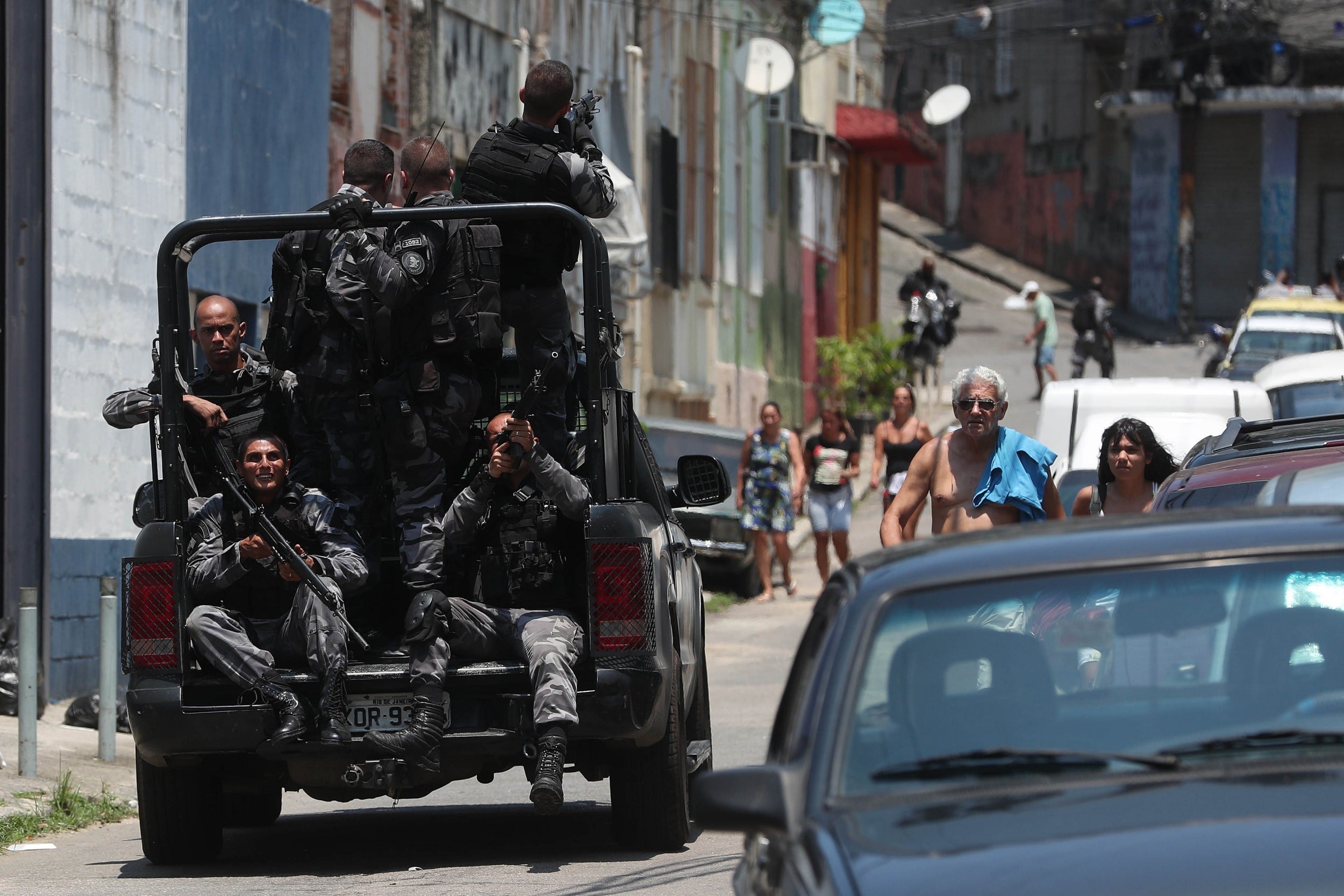
Your support helps us to tell the story
From reproductive rights to climate change to Big Tech, The Independent is on the ground when the story is developing. Whether it's investigating the financials of Elon Musk's pro-Trump PAC or producing our latest documentary, 'The A Word', which shines a light on the American women fighting for reproductive rights, we know how important it is to parse out the facts from the messaging.
At such a critical moment in US history, we need reporters on the ground. Your donation allows us to keep sending journalists to speak to both sides of the story.
The Independent is trusted by Americans across the entire political spectrum. And unlike many other quality news outlets, we choose not to lock Americans out of our reporting and analysis with paywalls. We believe quality journalism should be available to everyone, paid for by those who can afford it.
Your support makes all the difference.Rodrigo dos Santos, 16, was speeding downhill on a motorcycle in Rio de Janeiro, a knapsack packed with marijuana, cocaine and pellets of crack on his back, when two police officers raised their rifles at him. The teenager sped by, his friend sitting behind him, clutching his waist. But within seconds, they toppled over in a barrage of 38 bullets fired by the police.
Rodrigo died on the way to the hospital, bleeding from a gunshot wound in his arm – and three in his back. The police never claimed he was armed, and one of the officers involved, Sergeant Sergio Britto, was on duty despite being on trial for murder, accused of shooting another man in the neck at close range. The death of Rodrigo added to a record number of killings by police in Rio last year – 1,814 – a surge of hundreds in a state with a long history of police brutality and a political leadership that has vowed to “dig graves” to stop crime.
Officially, police in Brazil are allowed to use lethal force only to confront an imminent threat. But an analysis of four dozen police killings in the violent Rio district where Rodrigo was killed shows that officers routinely gun down people without restraint, protected by their bosses and the knowledge that even if they are investigated for illegal killings, it will not keep them from going back out onto the beat.
In at least half of the 48 police killings analysed by The New York Times, the deceased were shot in the back at least once, according to autopsy reports, immediately raising questions about the imminent threat required to justify such killings. In 20 of the cases, the individual was shot by police at least three times. And of all the police killings reviewed by The Times, only two officers reported having suffered any injuries. One was a self-inflicted accident: It happened when an officer shot himself as his rifle misfired. The second officer tripped and fell.
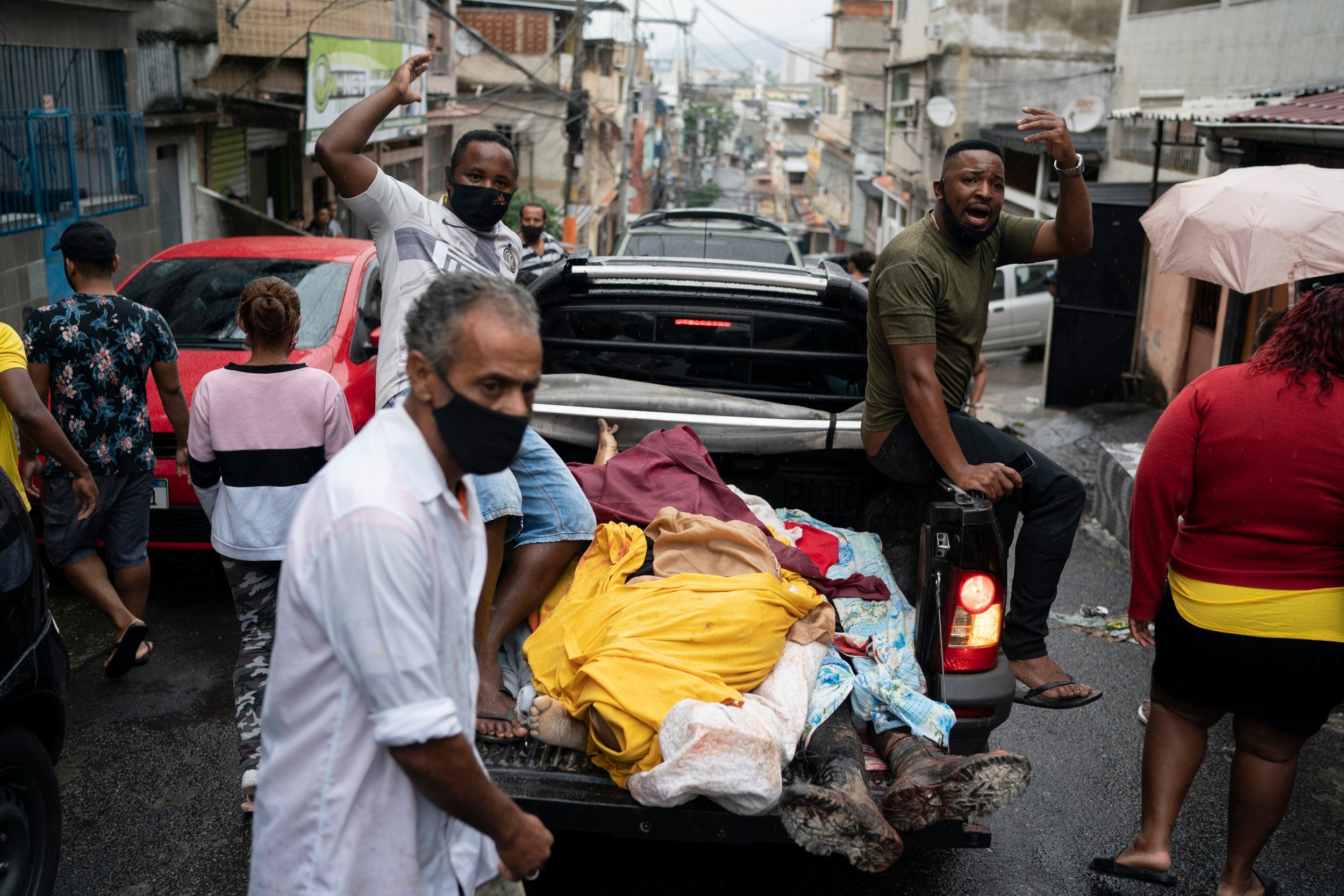
One-quarter of the police killings examined by The Times involved an officer who had previously been charged with murder. Half of the killings were carried out by officers who had been charged with at least one crime. One officer had previously been pulled from duty for a psychological evaluation after supervisors grew alarmed by the staggering amount of ammunition he fired on duty in a year: more than 600 rounds.
Some officials also acknowledge that police officers kill suspected criminals in premeditated ambushes. The police shootings have continued this year, even with the state ordering businesses to shut down and urging people to stay at home because of the coronavirus. Just recently, police killed 13 people during an operation in a poor part of Rio. No officers were killed.
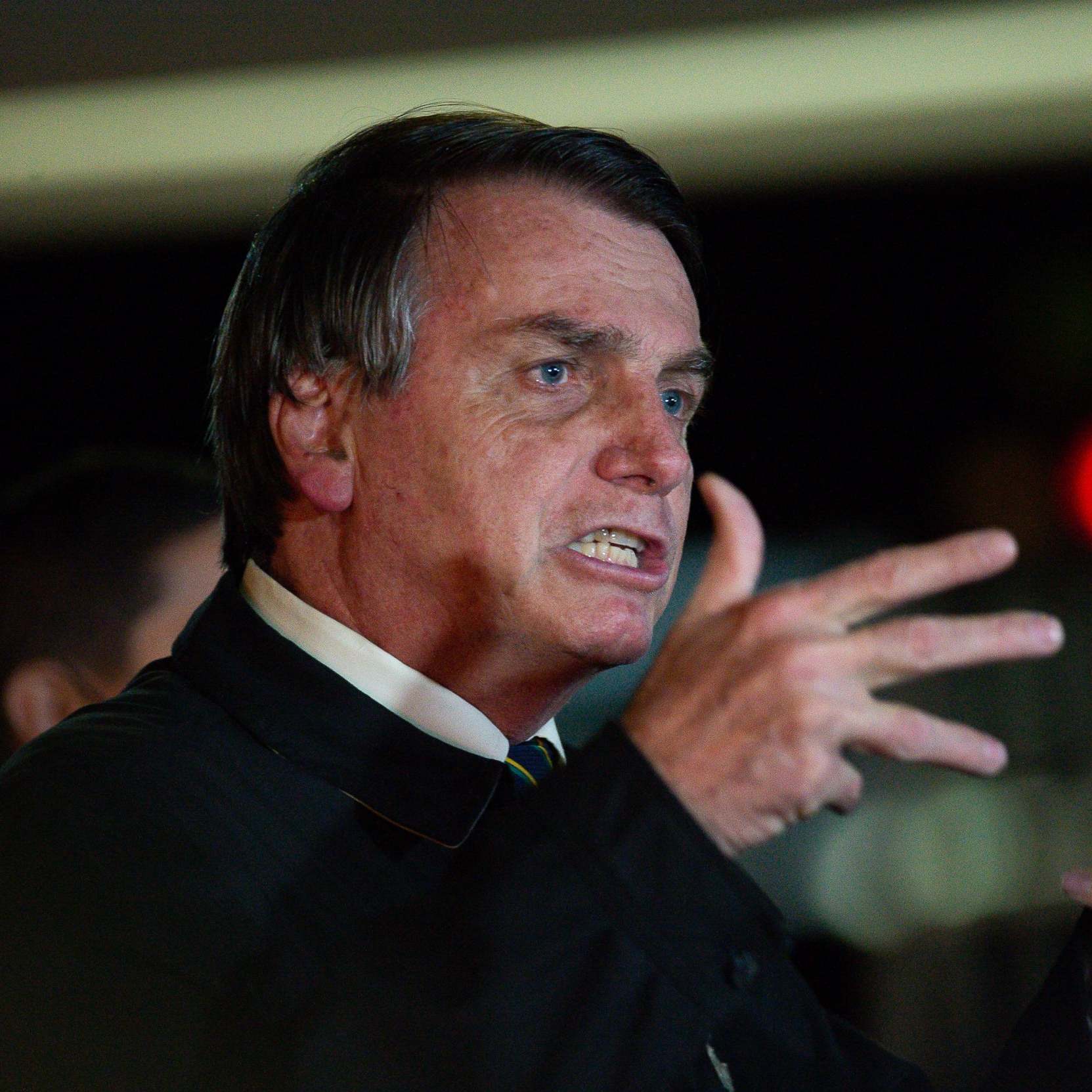
But the shootings – including last year’s record-breaking deaths, many of which occurred in poor neighbourhoods controlled by drug gangs – have generated relatively little outrage among violence-weary Brazilians.
To the contrary, the spike in police killings, which coincided with an overall drop in crime in Rio, is consistent with the campaign promises of president Jair Bolsonaro and governer William Witzel, a former federal judge who took office in January 2019. Both have pledged an all-out war against criminals that is reminiscent of the brutal police killings overseen by president Rodrigo Duterte in the Philippines.
Witzel has commanded snipers to shoot suspects from helicopters, while Bolsonaro has pushed to protect officers who kill on duty because of “excusable fear, surprise or violent emotion”.
In arguing for the change, the president has said that criminals should “die in the streets like cockroaches”, alarming researchers.
“In a country where impunity reigns, the administration is effectively granting police a license to kill,” says Ilona Szabo, executive director of the Igarape Institute, which studies public safety.
Bolsonaro’s rise has galvanised many police officers in Rio, where officials have failed for decades to curb the gangs that control a vast patchwork of low-income communities, openly selling drugs and merchandise from hijacked cargo trucks.
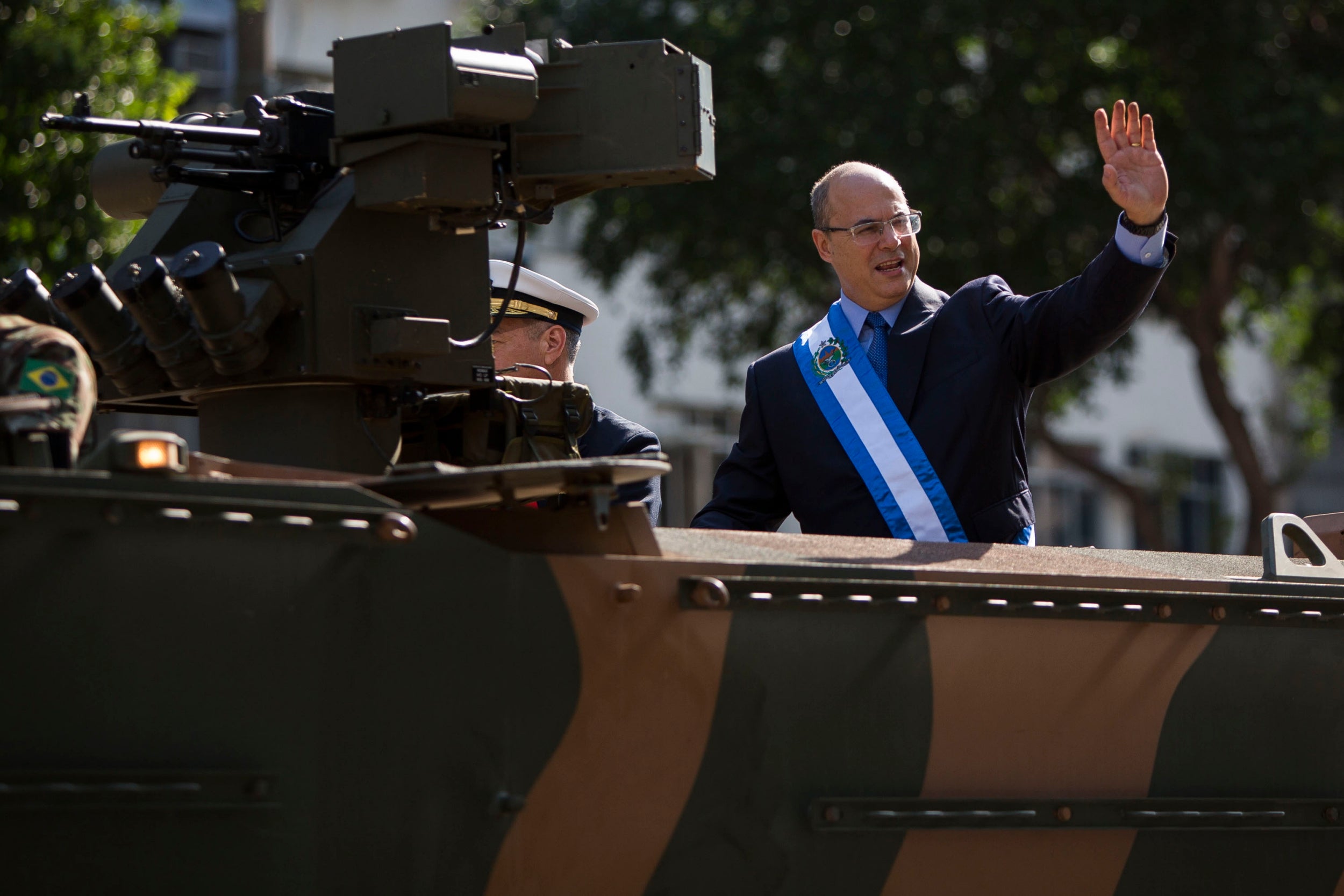
Among the throngs of supporters who celebrated the rise of tough-on-crime politicians outside Bolsonaro’s seaside residence on election night in October 2018 was Britto, the officer involved in the death of Rodrigo – and many others. “A new era has arrived, the era of oppression,” Britto wrote on Facebook that night, using the handgun emoji that became a fixture of the president’s campaign.
Britto became a military police officer in 2002, joining the force that has primary responsibility for frontline policing in Brazil. Since 2010, he has played a role in at least 20 killings on duty, an unusually high number for officers, according to police reports. One of those cases, in September 2016, led prosecutors to try to get Britto off the streets. According to charging documents, the officer shot a 20-year-old suspected drug dealer at close range behind the right ear.
Heeding the prosecutors, a judge in July 2017 ordered the police department to pull Britto from the field and take away his gun. But the officer’s lawyers asserted that he was a dedicated officer who acted in self-defence, leading a second judge to reinstate him.
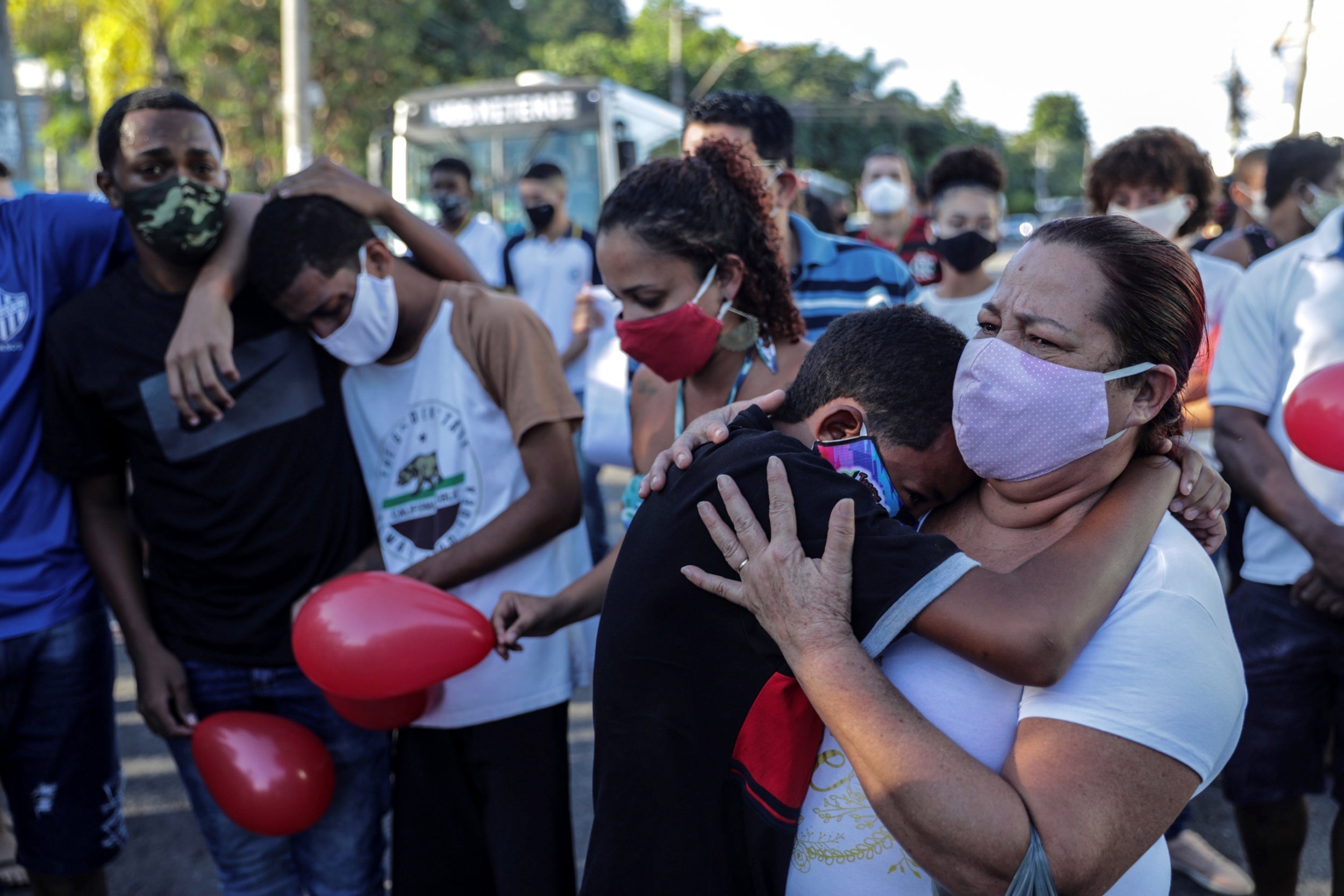
By early 2018, Britto was back on the streets of the 41st Battalion, which includes Chapadao, the neighbourhood where Rodrigo was killed in March 2019. Drug dealers and residents there know Britto by the nickname “Papai”, or Daddy, and speak about him with dread. Years after being charged with murder, Britto has yet to go to trial. He did not respond to multiple requests for an interview.
Lieutenant colonel Vinicius Carvalho, who ran the 41st Battalion until recently, says supervisors in rough areas must often rely on hardened police officers who thrive in dangerous environments – even those charged with murder or suspected of other crimes – because the force is severely understaffed.
The 41st Battalion, known as the 'battalion of death', has been one of the most violent in Rio de Janeiro since its inception in 2010
“It’s better that I have him there – an experienced, coldblooded man who has been through a number of situations – than if I perhaps put someone who lacks experience,” Carvalho says in his office, with its numerous decorative skulls, including one standing four-feet tall next to his desk.
Rio de Janeiro’s military police is 15,000 officers short of its authorised force of 60,000, and the gap is particularly acute in violent districts. As of early January, the 41st Battalion had 612 officers, fewer than half the number the police department deems necessary. Of those, more than 20 per cent were on leave or pulled off the streets for physical or psychiatric disability.
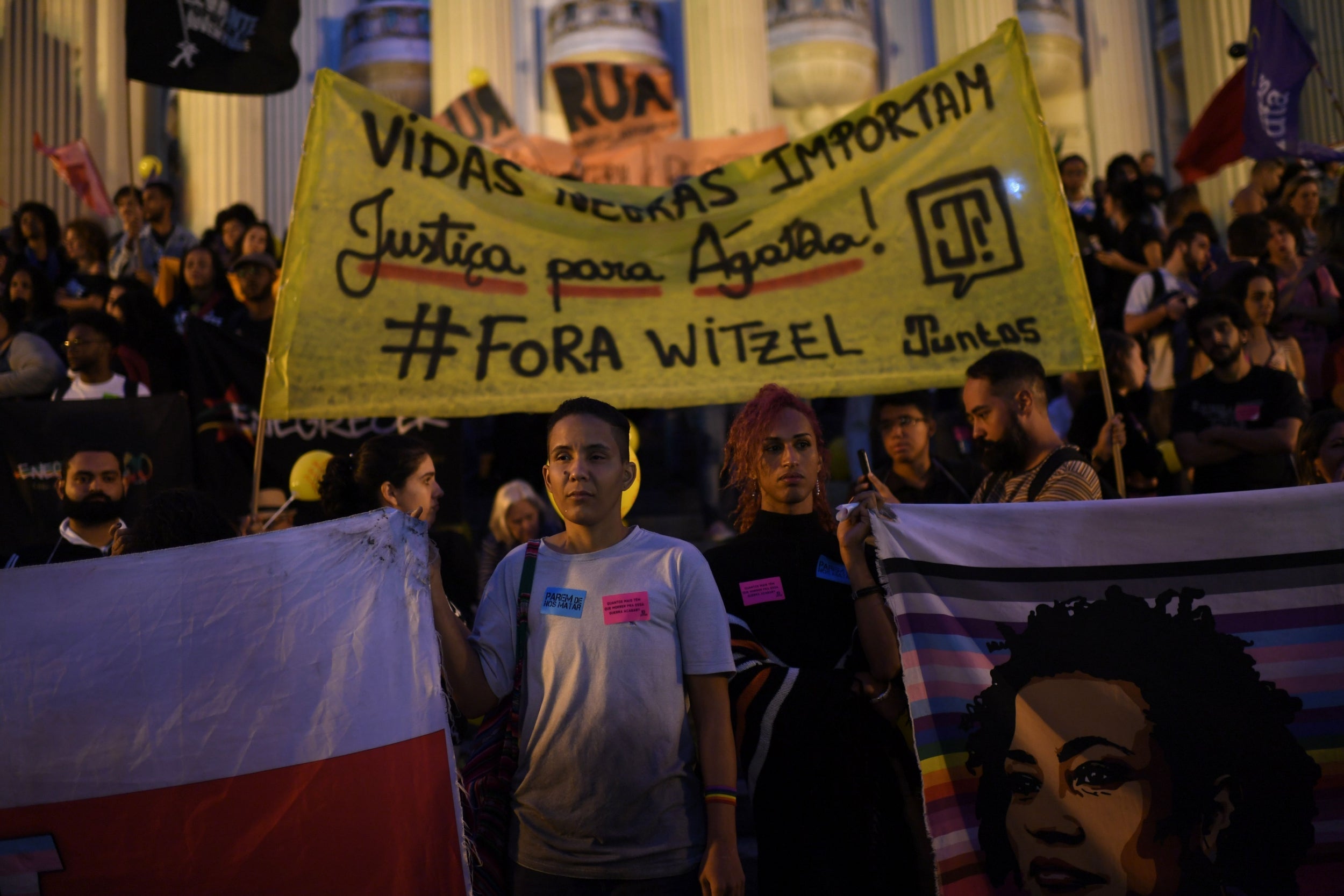
Carvalho says officers who have been involved in a killing would ideally go off duty for a few days to cool off. But doing that in districts where gunbattles are a near-daily reality, he says, would be “utopian”. Beyond that, he says, officers who get suspended often ask to go back on duty because there’s an addictive quality to the adrenaline rush of being in combat.
“Your sweat smells different after combat from all the stuff you poured out,” he says, inhaling as he pulled up his collar to his nose.
The 41st Battalion, known as the “battalion of death”, has been one of the most violent in Rio de Janeiro since its inception in 2010 to bolster security in an area with roughly half a million people. Much of the battalion’s territory – which includes some 50 former squatter settlements known as favelas – is controlled by two drug gangs, the Red Command and the Pure Third Command, which often clash in turf battles.
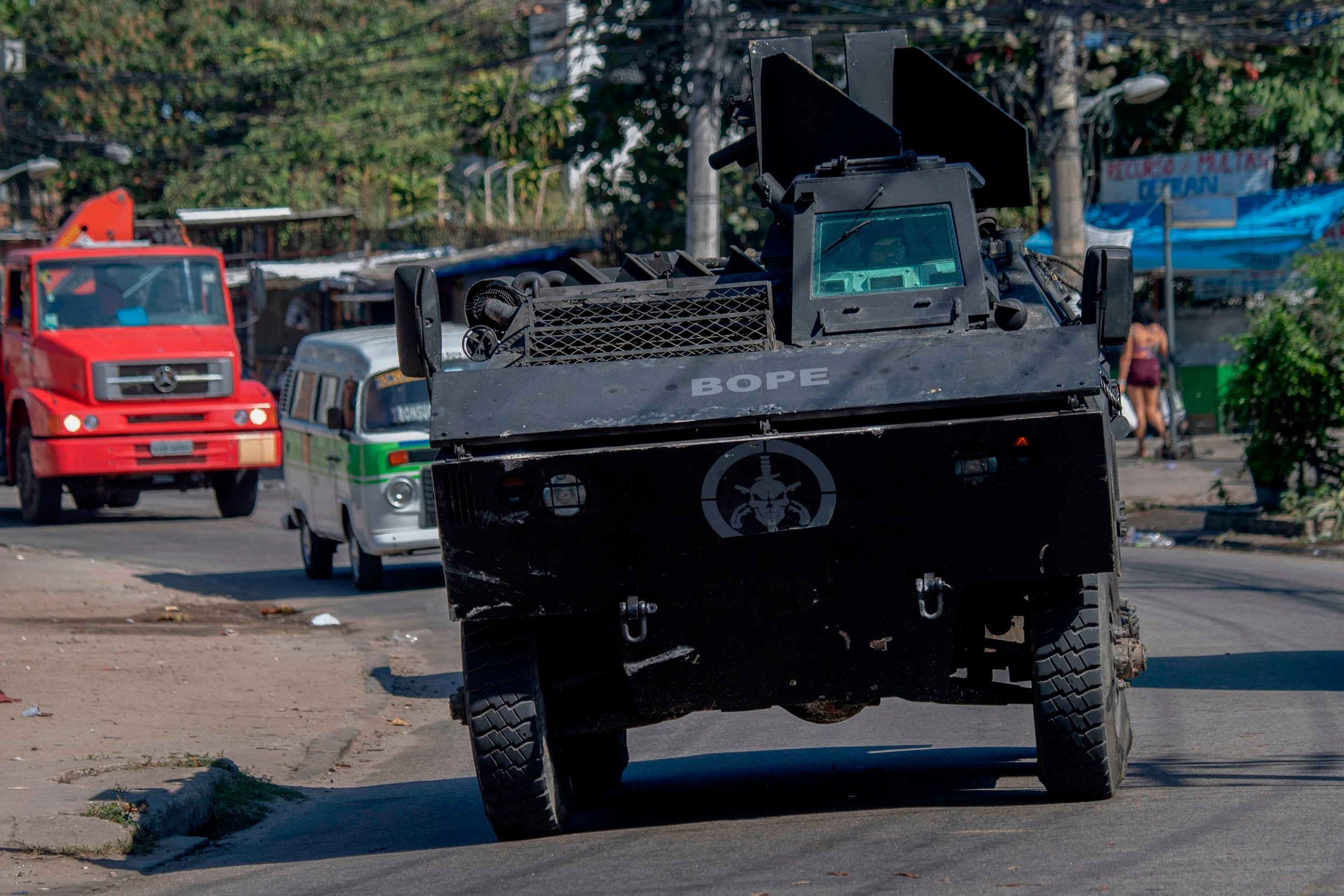
Drug traffickers exercise their reign through payoffs to police and physical barriers made of steel slabs ringed by tyres. The blockades are set ablaze when a police incursion appears imminent, delaying the heavily armoured vehicles officers use to conduct raids.
In 2015, the battalion’s deadly use of force led prosecutors to include it as a target of a special task force created to investigate police killings. By 2018, the rate of killings by police officers had gone down by almost 30 per cent in the 41st Battalion. But in 2019, as the country’s new political priorities became clear, the numbers went up again, increasing by more than 20 per cent statewide. In the 41st police district, they rose by about 22 per cent.
Captain Willians Andrade, a squad supervisor in the district, drives past a favela known as “Bin Laden” for the intensity of fighting in it, noting that teenagers join gangs as early as 14 years old because they have little faith in the education system and come to see the drug trade as a means of protection and wealth.
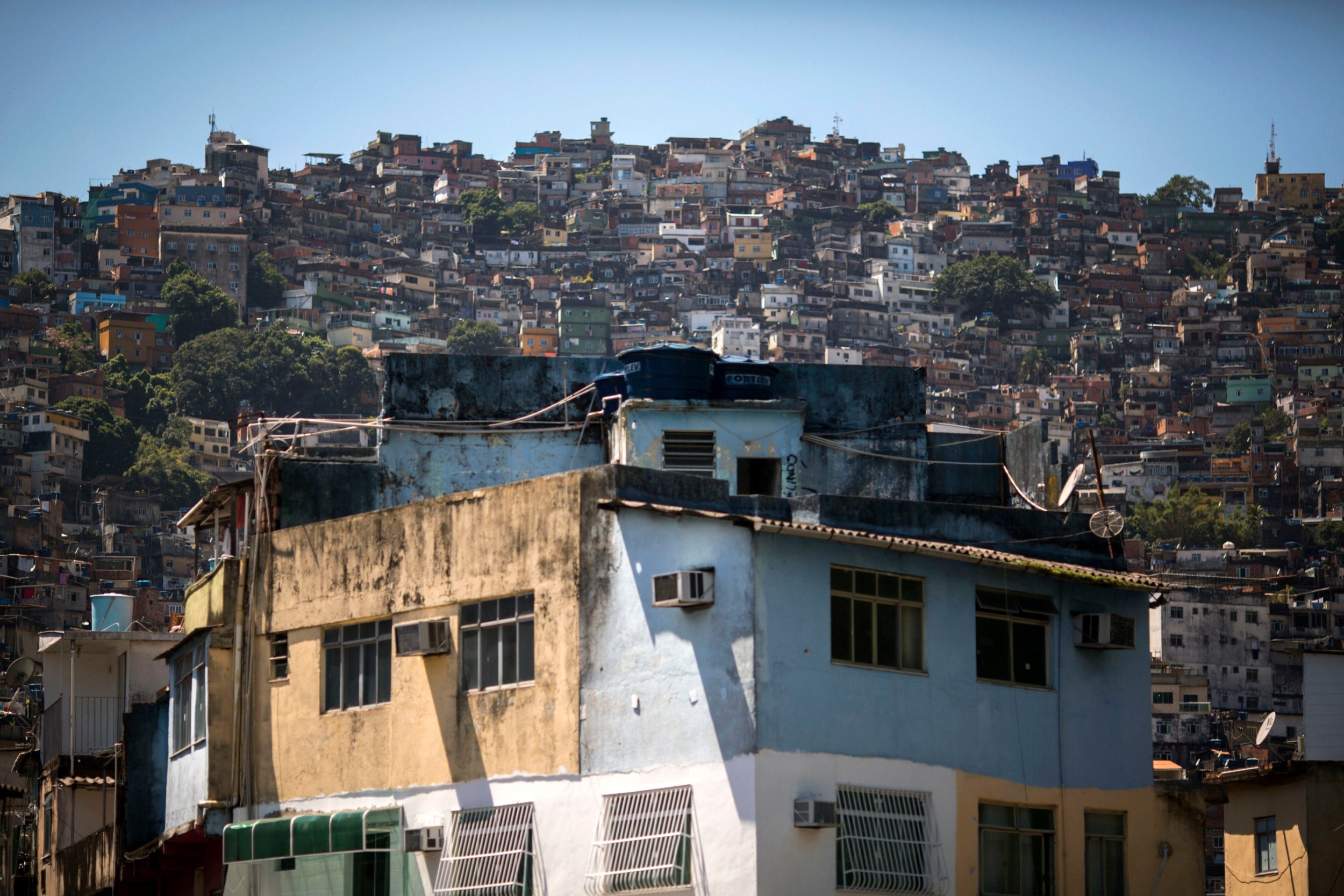
“No police officer leaves home in the morning wanting to kill someone,” he says. “But you can’t expect that the criminals will respect you.”
Paulo Roberto Cunha, a prosecutor who specialises in police violence, says the rise in killings by officers in the 41st Battalion is alarming, and he notes that no officers were killed or wounded in the confrontations analysed by The Times. “At the very least, this means the police force is prioritising a form of action that increases the risk of confrontation, and with that, the number of deaths,” he says.
In a statement, the police said officers in the battalion had taken considerable risks to seize more than 1,800 weapons over the last five years from “bloodthirsty thugs”. The statement added that all fatal police shootings are investigated thoroughly.
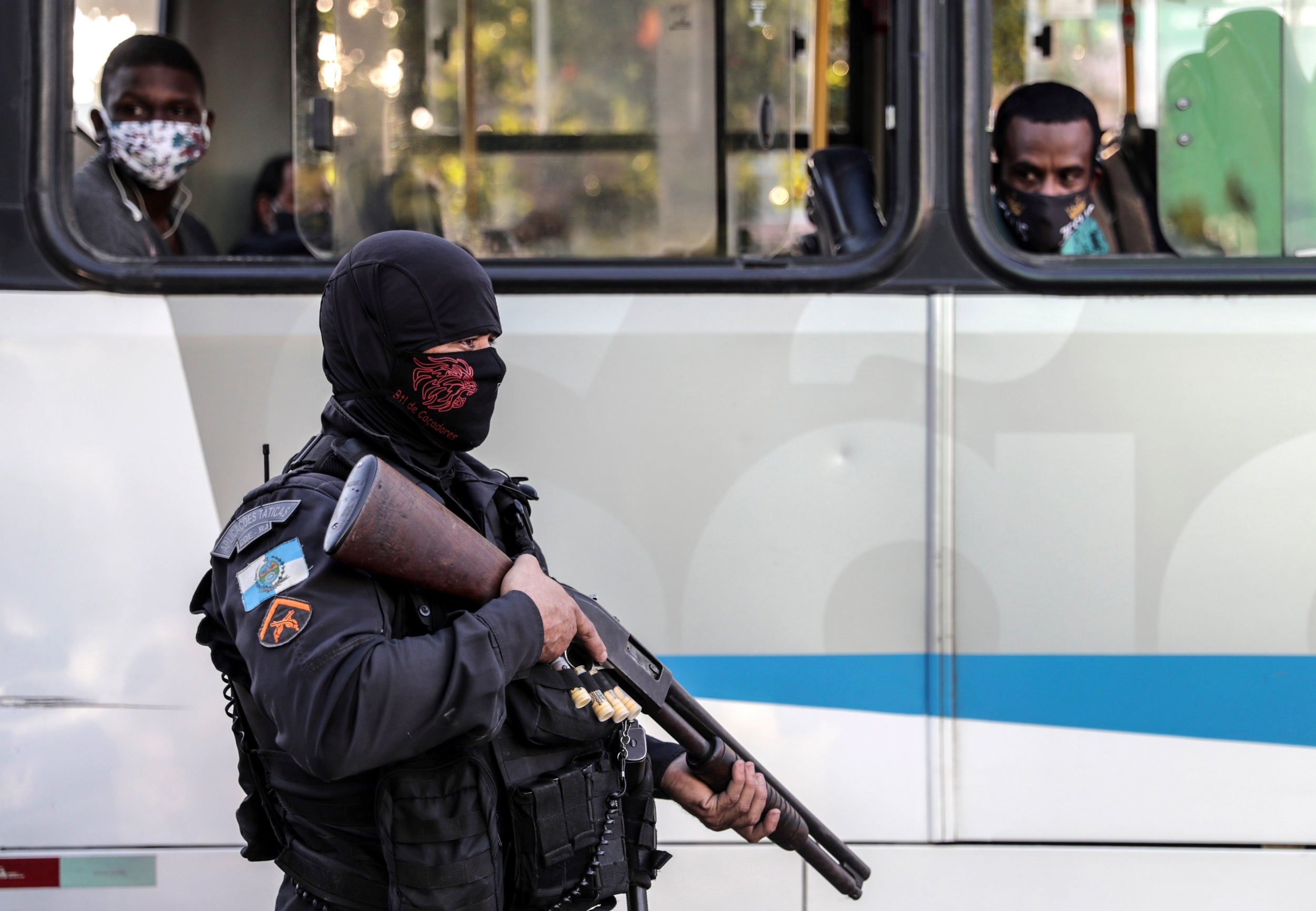
When Rodrigo was shot on the morning of 23 March 2019, his sister Yasmin dos Santos, 18, who had become his main caretaker, arrived at the scene minutes later. Her brother was bleeding to death inside a heavily armoured police vehicle. “What now?” she recalls an officer snapping at her the moment she approached. “You’re going to say he wasn’t a criminal, that you didn’t know?”
Rodrigo was born in Chapadao. His mother, Maria Jose da Silva, had left them as young children with their father, who often beat her, she says. “I didn’t have a house, and he did,” da Silva recalls with defeat.
The cycle of violence means many children raised in favelas nurture a profound hatred of the police, a sentiment starkly reflected in graffiti that calls for killing cops
Rodrigo struggled in school as early as first grade, a common prelude for teenagers who end up joining gangs. After years of failing grades and long absences, he dropped out when he was 15, having been held back in sixth grade three years in a row. Relatives of more than a dozen young men who died at the hands of police in 2019 say their sons and brothers had also decided to become drug dealers just after dropping out of school.
“The Brazilian labour force becomes poorer, and the security system is burdened with yet another candidate for crime,” Claudia Costin, Rio’s former education secretary says of the troubled school system.
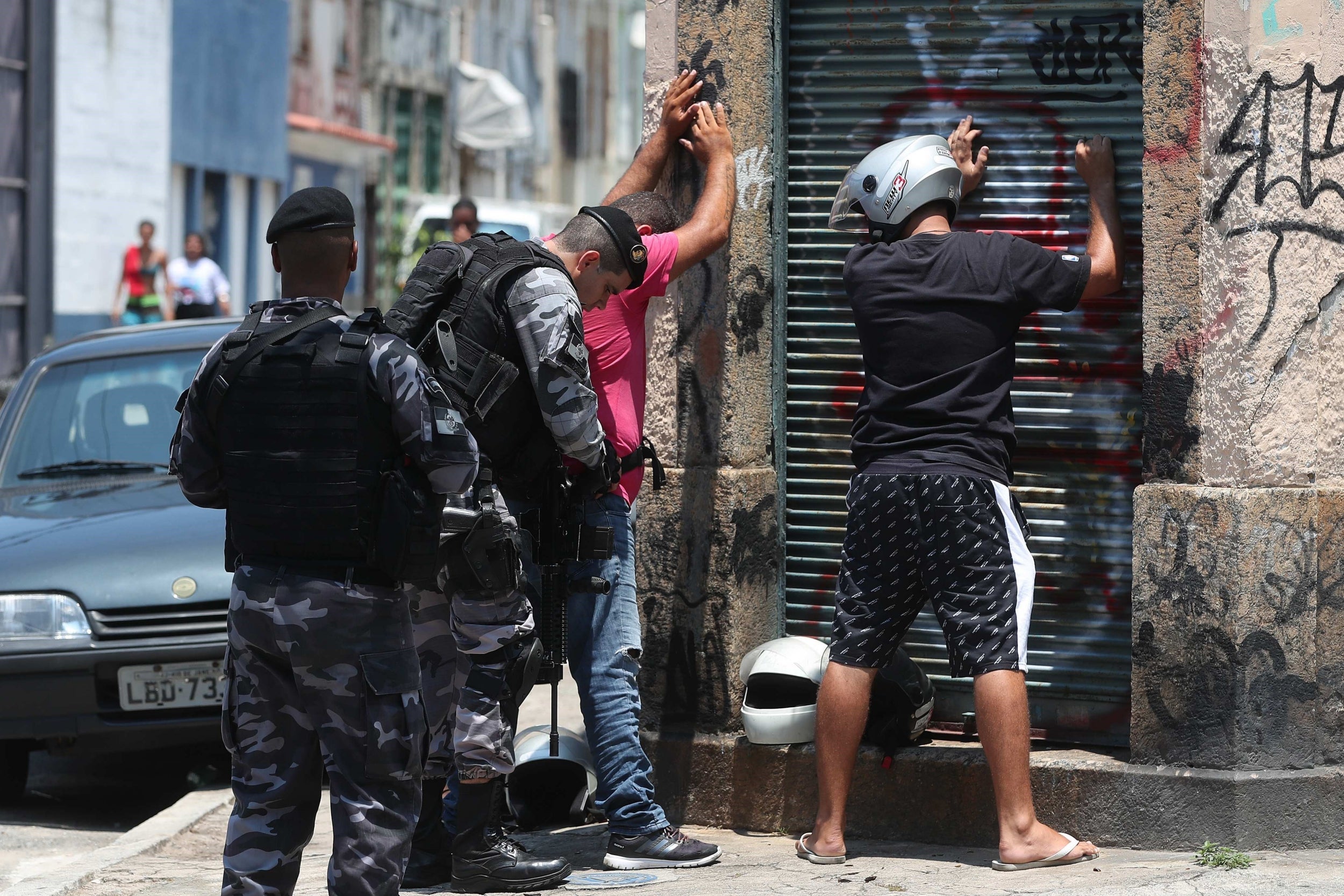
When Rodrigo joined the Red Command, his sister made a desperate plea for him to return to school. “‘You’re too young,’” she recalls telling him.
But Rodrigo was unbowed, she adds: “He thought he would become a burden.” Hours after Rodrigo died, Britto and Ataliba told investigators that the 16-year-old had been struck during a shootout between police and drug traffickers. Yet three witnesses in the area at the time say there were no armed gang members present when the officers opened fire. It is mandatory for Rio de Janeiro officers to call forensic experts to inspect the scene of a fatal shooting. But that rule is widely ignored.
Andrea Amin, a prosecutor who leads a task force that investigates police killings, says forensic experts operate on such a shoestring budget that they often lack luminol, a chemical used to identify traces of blood.
Building cases against officers, she adds, is extraordinarily hard because the relatives of victims are afraid that reporting police abuses will make them vulnerable to retaliation. “If we are not careful, we can put someone at risk,” Amin says. “They could die.”
Dos Santos says she felt helpless to seek an investigation into her brother’s death. “I was scared,” she says.
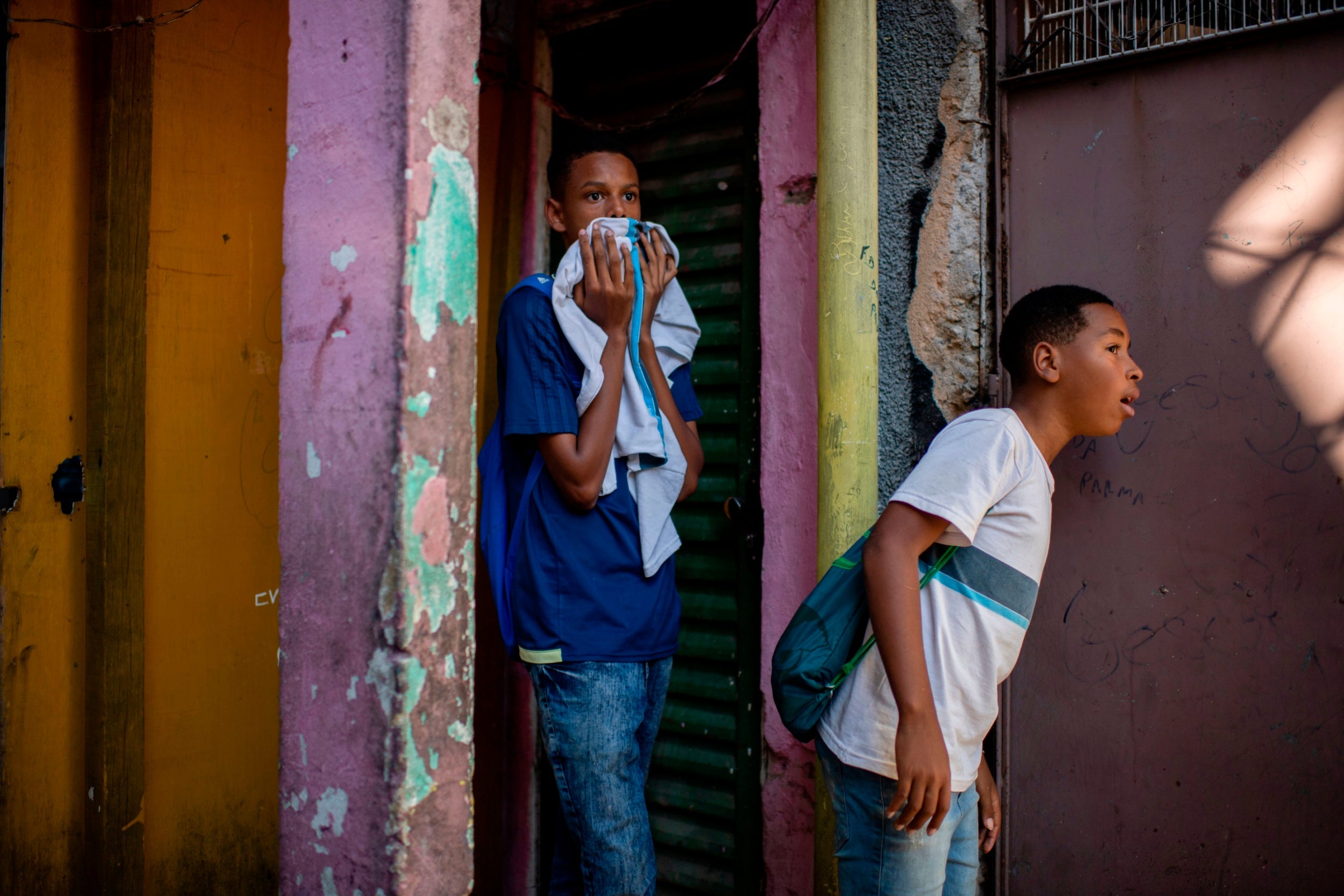
In eight of the police killings analysed by The Times, family members of the deceased say their loved ones were killed in ambushes set by police to kill traffickers. Carvalho acknowledges that officers use the tactic. He disapproves, he says, but “that is the naked truth of what happens”.
Given the lack of accountability for police killings, murder is often used as an extortion tool by corrupt cops, prosecutors say. Three drug dealers in the 41st say they were tortured and extorted by police officers. One shows marks from wires he says were wrapped around his toes to electrocute him. A resident separately shows bruises from beatings he says he suffered while witnessing traffickers being tortured. The drug dealers and the resident, who spoke on condition of anonymity for fear of reprisals, says the officers demanded large sums of money, threatening to arrest or kill them if they did not pay.
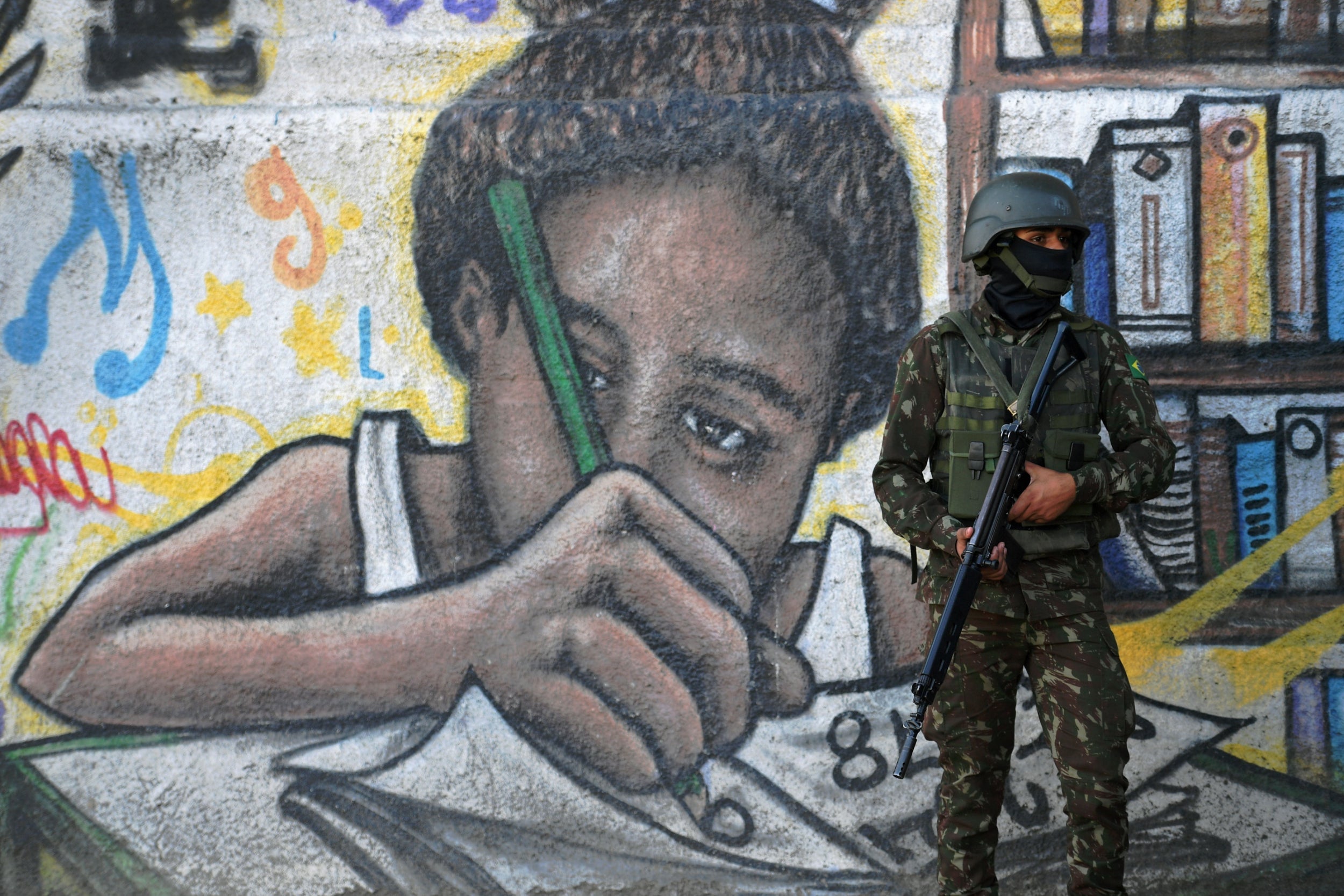
The cycle of violence means many children raised in favelas nurture a profound hatred of the police, a sentiment starkly reflected in graffiti that calls for killing cops. Gisele de Souza, a resident of the area, says her son Wendell, 26, left a job at a McDonald’s after he was nearly killed by police officers who mistook him for a robber. “‘Forgive me, mom, you raised me well,’” she remembers him telling her when he decided to join a gang six years ago. “He said he wanted revenge against the police.”
Police fatally shot him last June.
© The New York Times
Join our commenting forum
Join thought-provoking conversations, follow other Independent readers and see their replies
0Comments